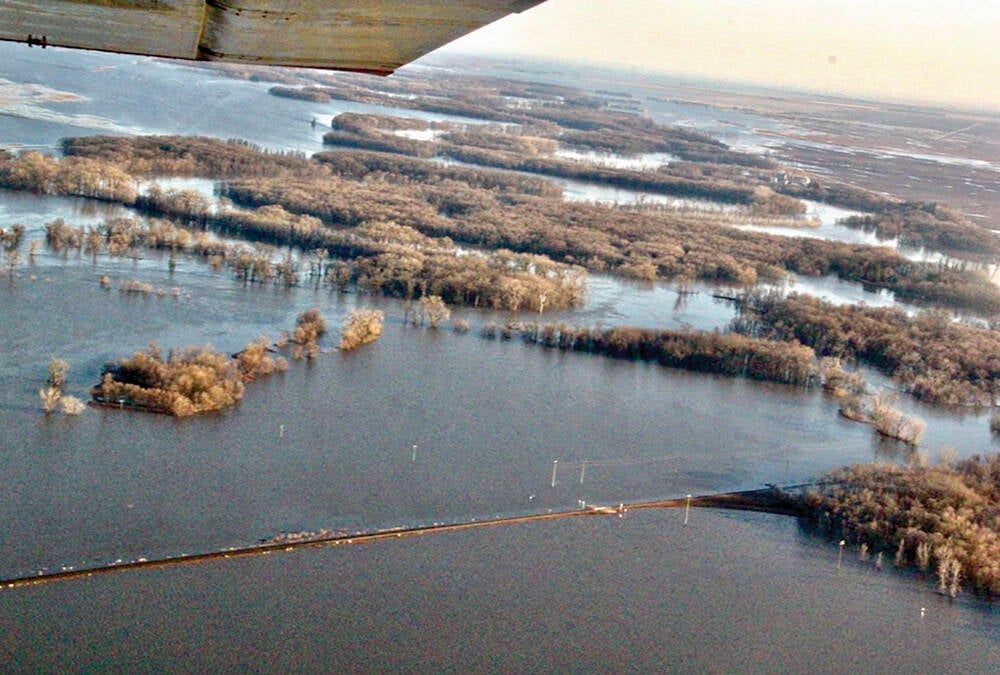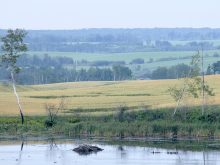WOLFE ISLAND, Ont. – Young and innovative Ontario farmers Jason and Christina Pyke first saw a bison herd up close in Alberta in 1995.
Before that, it had been a concept, read about in a magazine.
They both came from dairy farm backgrounds in eastern Ontario but they saw potential.
Keeping their parents’ dairy operations would have meant significant quota investment and farm upgrades.
“We decided dairy wasn’t for us,” he recalls. “Milking cows is eight days a week. We wanted a lifestyle we could enjoy.”
Read Also

Rural Manitoba resources slim on natural disaster planning
A study from Brandon University’s Rural Development Institute has found that many rural and small municipalities don’t have the staff or resources to make formal climate plans against natural disaster.
They wanted family time with their kids, Jack and Chloe. Also, the equipment needed replacing and the land was poor for growing crops.
Bison became an option. In winter 1996, they bought their first animals, 30 head from a northern Ontario herd.
It has paid off with a 150-head herd, strong sales in Kingston and Ottawa farmers’ markets and a significant contribution to their farm bottom line.
“The meat is in high demand, low in fat,” said Jason, now president of the Ontario Bison Association. “Right now, we can’t find enough supply.”
They slaughter 60 animals annually and buy additional yearlings to meet market demand.
They recently opened a store on the farm to sell meat cuts and bison leather products.
“What the industry really needs in Ontario is more cow-calf operators,” he said. “There just isn’t enough supply.”
The Pyke farm on Wolfe Island, the largest of Ontario’s Thousand Islands archipelago and roughly where Lake Ontario becomes the St. Lawrence River, is nothing if not innovative.
With help from parents, Grant and Margaret, and brother Jack, the Pykes have 700 acres of wheat, corn and soybean cash crops.
The crops provide two-thirds of the farm’s income.
They bought the farm from Jason’s parents in 2001. Christina grew up on her family’s farm at nearby Gananoque on the mainland.
In 2009, the two 36-year-olds won Ontario’s Outstanding Young Farmers award and Jason figures it was because of their willingness to try new things.
“I feel it was the diversity of our operation,” he said. “We’re not afraid to try something new, different.”
The latest is the farm’s venture into the energy industry. Alberta-based TransAlta has turned Wolfe Island into one of the largest wind farm developments in the country and the Pykes decided to get involved.
They rent two acres of land to the company, which built four 2.3 mega-watt wind turbines on the land. Revenue is between $9,500 and $14,000 per turbine annually.
“This is a very favourable location for wind energy,” said Jason.
“There are steady winds off Lake Ontario so it is a natural fit. And it is a good contribution to the bottom line.”
He and Christina are involved in farming environmentalism through soil and crop improvement groups and the Frontenac Environmental Plan Peer Review committee.
Jason has been involved in farmer-helping-farmer movements.
In 2002, he became the Wolfe Island coordinator of the Hay West project to send hay from eastern and central Canada to feed western cattle caught in a drought zone. Wolfe Island farmers donated and shipped 1104 round bales.
Island farming has its own challenges. To get inputs in and crops out, they depend on the three-mile ferry ride that leaves every hour to and from Kingston.
“It is more of an inconvenience than a barrier,” he said.
And then there is the microclimate that the surrounding water creates. Wolfe Island land typically has more heat units and misses the first “killer frost” of the year that hits the mainland in the autumn.
But cool breezes off the water mean that spring comes later.
It is an island reality that the Pyke family has accommodated for generations.
“I try to stay optimistic and if what you do is not working, look at something else to do,” said Jason.














